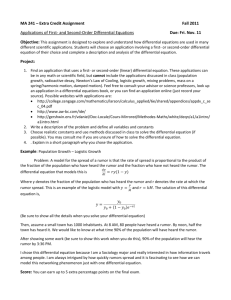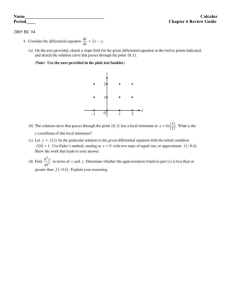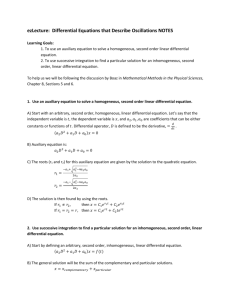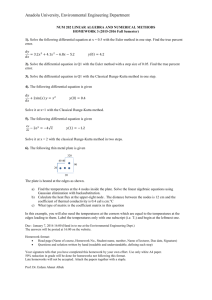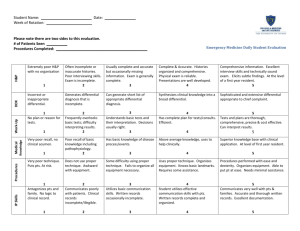Modeling using Differential Equation
advertisement
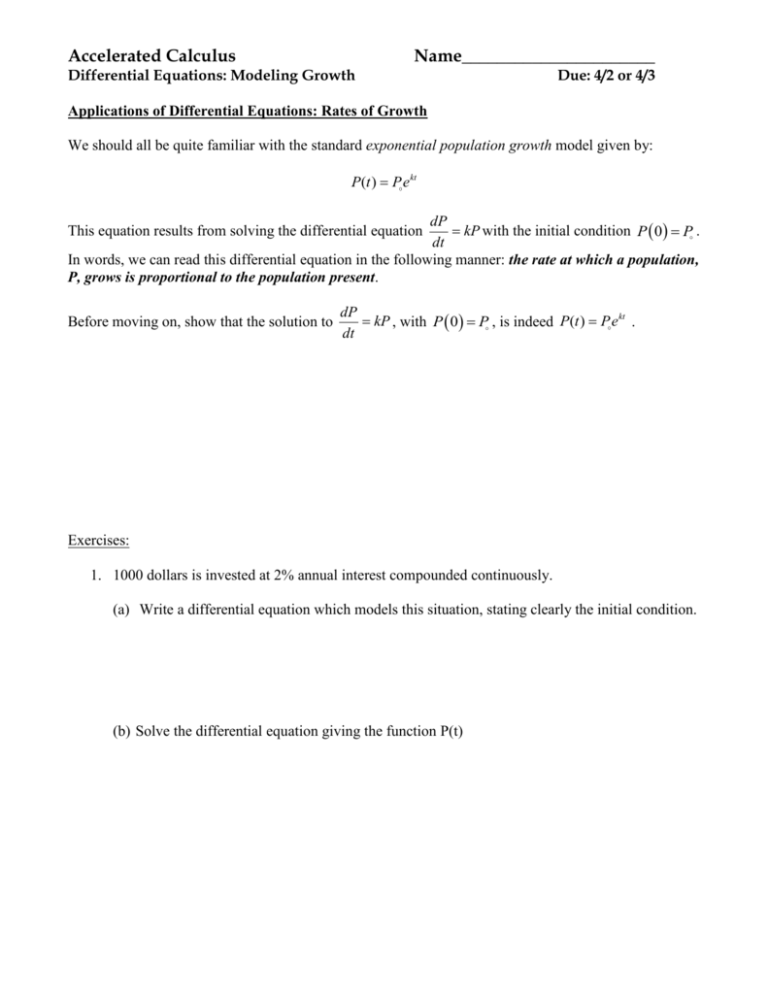
Accelerated Calculus Name______________________ Differential Equations: Modeling Growth Due: 4/2 or 4/3 Applications of Differential Equations: Rates of Growth We should all be quite familiar with the standard exponential population growth model given by: P (t ) Pe kt dP kP with the initial condition P 0 P . dt In words, we can read this differential equation in the following manner: the rate at which a population, P, grows is proportional to the population present. This equation results from solving the differential equation Before moving on, show that the solution to dP kP , with P 0 P , is indeed P (t ) Pe kt . dt Exercises: 1. 1000 dollars is invested at 2% annual interest compounded continuously. (a) Write a differential equation which models this situation, stating clearly the initial condition. (b) Solve the differential equation giving the function P(t) Accelerated Calculus 2. A population of bacteria is growing at a rate of 5% per minute. (a) Write a differential equation for the growth of the population (time is measured in minutes) (b) If the initial population is 500, how long does it take for the population to reach 10,000. 3. A 15 pound turkey is put in the oven to roast. The oven is set to 350 degrees. The initial temperature of the turkey is 40 degrees. The rate of change of the temperature of the turkey is proportional to the difference between its temperature and the temperature of the oven. (a) Write a differential equation which models this situation. (b) Solve this differential equation given that a turkey takes ½ hour per pound to cook. Accelerated Calculus Unchecked exponential growth, although it is a fundamental model, is actually not sustainable except in financial models. Most populations (even bacteria) have what is known as a carrying capacity (due to food running out, for example), so the differential equation is a combination of the exponential scenario and the turkey cooking scenario. In other words, the rate of growth is proportional to the product of the population and the “room for growth”. This is called logistic population growth. 4. A population is modeled by the differential equation: dP P 1.2 P 1 dt 4200 (a) For what values of P is the population increasing? (b) For what values of P is it decreasing? (c) What is the maximum value of P? (d) Find the solution of the differential equation (you will need to use “partial fractions”) given that the initial population is 500. Accelerated Calculus 5. It is concluded that an equatorial national preserve can support no more than 250 lowland gorillas. 28 gorillas were known to inhabit the preserve in 1970. Assume the rate of growth of the gorilla population is dP dt 0.0004P(250 P) , where t is measured in years since 1970. (a) Find a formula for the gorilla population in terms of t. (b) During what calendar year was the rate of change in the gorilla population greatest? Using correct units, what was that rate? Accelerated Calculus 6. One model for the spread of a rumor is that the rate of spread is proportional to the product of the fraction y of the population who have heard the rumor and the fraction who have not yet heard the rumor. (a) Write a differential equation satisfied by y. (b) Solve the differential equation. (c) A small town has 1000 inhabitants. At 8am, 80 people have heard the rumor. By noon half the town has heard it. At what time will 90% have heard the rumor?


